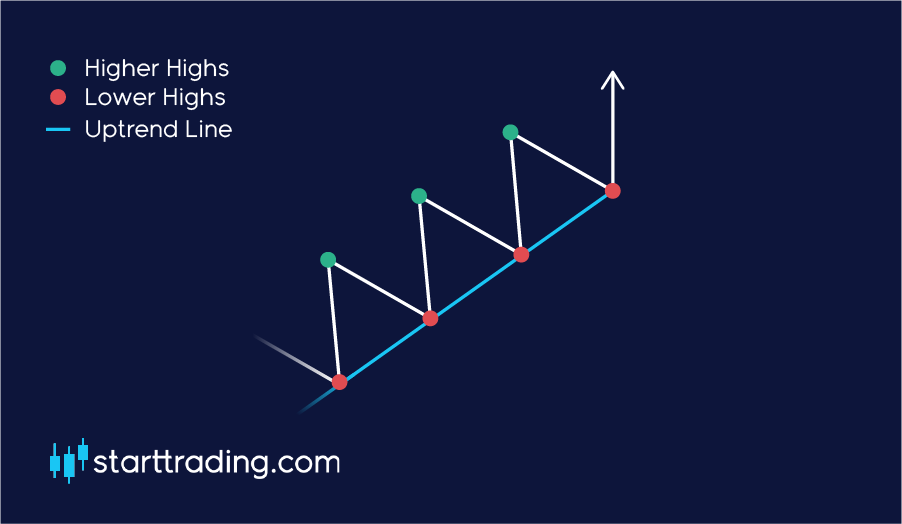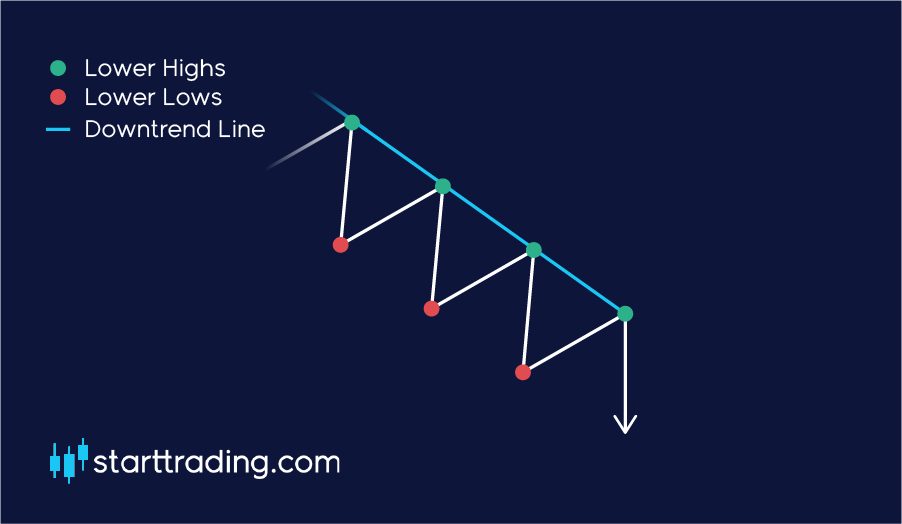As we mentioned several times throughout this course, consistency is key to profitable trading.
The vast majority of this consistency will rely upon your ability to quickly and accurately identify trends and then position your entry and exit points effectively within them. Remember, “the trend is your friend”. It’s cliche, but it’s true.
What is a trend?
Okay, so first things first, we need to define what a trend is before we can spot one.
At its most basic level, a trend is the general direction in which the market is moving
There are typically three main trends in which we would look to identify, an uptrend (bullish), and downtrend (bearish), or a sideways/flat trend.
There is no set time for which a market must be moving for it to be considered a trend, however, the longer a trend remains valid then the more solid and qualified the trend becomes.
How do you identify a trend?
The simplest way of identifying a trend is to pull up the chart and watch the price action of the currency pair.
Price action is shown on most charts in the form of candlesticks. These candlestick display historic price movements of an asset over a given time frame and are plotted on a chart.
This allows us to easily visualise trends and determine what general direction the market is moving in.
For most, if not all of our trading strategies, we will be looking to trade in uptrends or downtrends.
There are certain situations in which you may enter into a sideways market but these are few and far between and have a lot more risk attached. It’s better to stick to clear uptrends and downtrends and enter your positions with more confidence in the direction the trend is moving in.
Let’s break each one down and look at what qualifies as an uptrend or a downtrend.
Uptrend
As I am sure you have already guessed, an uptrend describes the price action of the market when the overall direction is considered to be upwards.
If you can see that the price is clearly moving up over a period of time, then the chances are you are looking at an uptrend in the market.
The fully qualify as an uptrend, each peak and trough of the price action should be higher than the previous peaks and troughs. In other words, we would need to see a series of “higher highs and higher lows”.

As you can see from the example above, the peaks of each movement in the price action are higher than the previous highs. We can also see that each low is higher than the previous low.
This indicates an upward momentum and the market is being pushed higher.
In general, we should be looking for opportunities to go long and try to ride the trend out.
Downtrend
There are no points awarded for guessing what a downtrend is. Yep, a downtrend is what describes the price action when the overall direction is considered to be downwards.
When we see that the price is clearly falling over a given period of time, you will most likely be looking at a downtrend.
In direct contrast to an uptrend, we identify a downward trend by spotting “lower highs and lower lows” in the market.

We are looking for when each trough drops a little lower than the previous low and when each high looks to be weakening when compared to the last high,
This signifies that the market may be running out of steam and we have hit some buyer exhaustion. The market is now bullish and the trend is downward.
In general, we should be looking for opportunities to short the market on this occasion and ride the trend downwards.